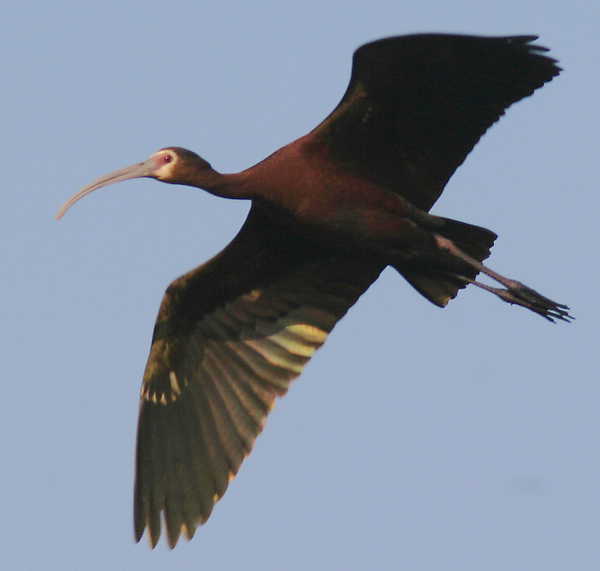
A White-faced Ibis that birders found at Green Bottom Wildlife Area in West Virginia turned out to be the Second State Record. It’s also interesting to note that the location is just across the Ohio River from the state of Ohio.
|
The last week of April provided many rare bird sightings, including a First State Record Black Phoebe in Nebraska. Four new Second State or Provincial Records were also reported: a Second State Record White-faced Ibis in West Virginia, a Second Provincial Record Worm-eating Warbler in Manitoba, a Second State Record Bell’s Vireo in Virginia, and a Second State Record Hooded Oriole in Michigan. And would you believe that three Crescent-chested Warblers are being seen in southern Arizona?
STATE & PROVINCIAL RECORDS
First State Record Black Phoebe – Morrill, Nebraska
Second State Record Hooded Oriole – Ann Arbor, Michigan
Second Provincial Record Worm-eating Warbler – Winnipeg, Manitoba
Second State Record Bell’s Vireo – Blacksburg, Virginia
Second State Record White-faced Ibis – Green Bottom Wildlife Area, West Virginia
Seventh State Record Townsend’s Warbler – North St. Paul, Minnesota
REALLY RARE SIGHTINGS
Crescent-chested Warblers (3) – near Portal, Arizona
Black-whiskered Vireo – Duck, North Carolina
Black-whiskered Vireo – Sabine Woods, Texas
Yellow-Green Vireo – Okaloosa Island, Florida
Ruff – near Caledonia, Michigan
Little Egret – Cumberland, Maine
Berylline Hummingbird – Madera Canyon, Arizona
Yellow-throated Warbler – San Francisco, California
Black-necked Stilt – Hawkeye Wildlife Area, Iowa
Tricolored Heron – near Sikorsky, Connecticut
Black Phoebe – Nelson, British Columbia
Louisiana Waterthrush – Mount Desert Island, Maine
CONTINUING RARE BIRDS
The Tufted Duck continues to be observed in Calgary, Alberta, a Ruff continues in Wisconsin near the border of Illinois, and a singing male Black-faced Grassquit continues to be observed at Everglades National Park in Florida. Keep alert for more off-course birds throughout spring migration!
For more information, see the American Birding Association’s Rare Bird Alert at https://www.aba.org/rare-bird-alert-may-1-2020/ Special Thanks to the ABA, and Nate Swick, who does such a great job of compiling the ABA’s Rare Bird Alert, which we use to prepare this weekly replay.
You can often find more information about individual rare bird sightings from the state rare bird alert listserves that you can access at http://birding.aba.org/ or at https://www.facebook.com/groups/ABArare/